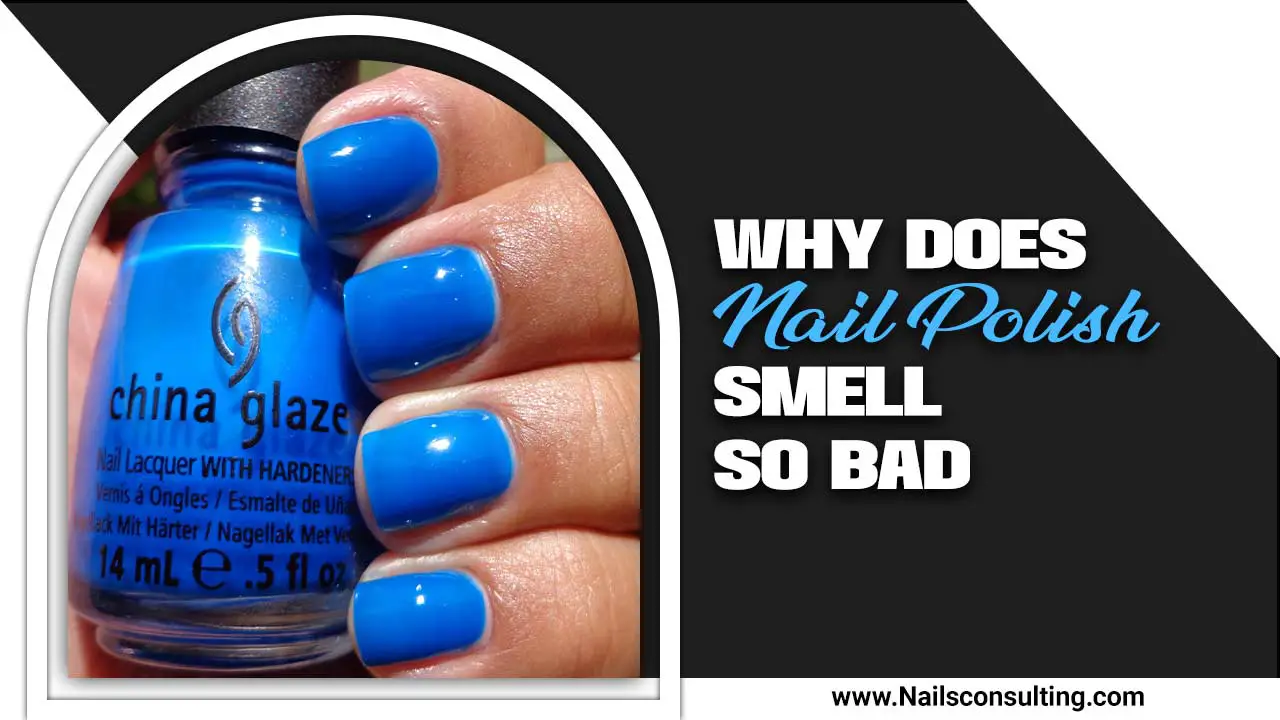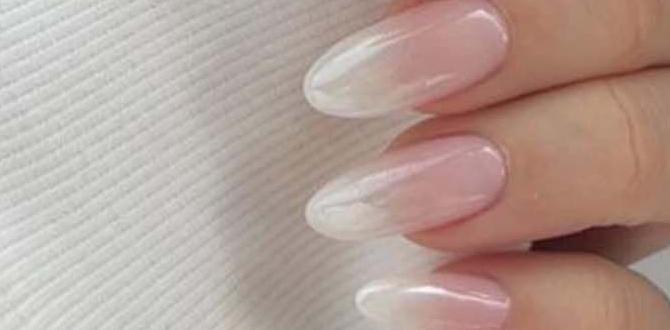Round nail designs are your perfect starting point for beautiful, fuss-free manicures! These gentle shapes are flattering, easy to achieve at home, and a fantastic base for countless stylish looks. This guide will give you all the essential tips to master them beautifully, even if you’re brand new to nail art.
Welcome, nail lovers! Have you ever looked at gorgeous nail art and thought, “That’s way too complicated for me”? Or maybe you’ve tried a nail shape that just didn’t feel quite right? Don’t worry, you’re not alone! Many beginners find nail shaping and design a bit daunting. But what if I told you there’s a shape that’s universally flattering, super easy to maintain, and a fantastic canvas for almost any color or simple design? Enter the round nail! It’s a classic for a reason, offering a soft, elegant look that’s perfect for any occasion. Get ready to unlock the secrets to creating beautiful round nail designs, no matter your experience level. We’ll break down everything you need to know, from shaping your nails just right to adding those beautiful finishing touches that will make your manicure pop.
Why Round Nails Are a Beginner’s Best Friend
Round nails are a fantastic choice for those just dipping their toes into the world of nail design. Their simplicity is their superpower!
- Universally Flattering: The soft curve of a round nail tends to elongate the fingers, making them look graceful and slender. This shape suits almost everyone, regardless of finger length or nail bed width.
- Low Maintenance: Unlike sharper shapes like stiletto or almond, round nails are less prone to snagging or breaking. This means fewer chips, fewer breaks, and a manicure that stays looking good for longer, which is perfect for busy schedules.
- Easy to Achieve: Filing your nails into a smooth, rounded shape is straightforward. You don’t need a professional salon to get this look; it’s easily done at home with a good quality nail file.
- Versatile Canvas: Whether you love a bold solid color, a delicate French tip, or a simple dotting design, the round shape provides a perfect, smooth surface for almost any kind of nail art you can imagine.
- Comfortable: The lack of sharp edges makes this shape comfortable for everyday activities. You won’t be catching them on sweaters or accidentally scratching yourself.
Essential Tools for Your Round Nail Design Journey
Before we dive into designs, let’s gather our go-to tools. Having the right equipment makes all the difference, especially when you’re starting out.
The Must-Haves for Shaping and Polishing:
- Nail File: Look for a medium-grit file (around 180-240 grit) for shaping and a finer grit (240+) for smoothing. A glass nail file is also a great investment as it gently files and seals the nail edge, reducing splitting. You can find excellent quality crystal nail files from brands like Gerry Weber (note: this is an example of a reputable fashion brand that might carry beauty accessories, always check specific retailers for availability).
- Cuticle Pusher: A wooden or metal cuticle pusher helps gently push back your cuticles after softening them, creating a clean nail bed for polishing.
- Nail Buffer: A buffer block with multiple grits is super helpful for smoothing ridges and adding shine.
- Base Coat: This is crucial! It protects your natural nail from staining and helps your polish adhere better.
- Top Coat: Your stylist’s best friend! A good top coat seals your design, adds unbeatable shine, and prevents chipping.
- Nail Polish Colors: Start with a few of your favorite colors.
- Optional: Dotting Tools or Toothpicks: For adding simple accents.
- Optional: Cotton Pads and Nail Polish Remover: For clean-up and mistakes.
Mastering the Perfect Round Shape: A Step-by-Step Guide
Achieving a beautiful round shape is simpler than you think. Follow these steps carefully, and you’ll have perfectly shaped nails in no time!
Step 1: Prepare Your Nails
- Remove any old nail polish using a good quality nail polish remover.
- Soften your cuticles by applying cuticle oil or a cuticle remover product. Gently push them back with a cuticle pusher. Trim any excess dead skin if necessary, but be gentle!
- Wash your hands thoroughly to remove any oil or residue.
Step 2: Shape Your Nails
This is where the magic happens! You want to create a soft, curved edge.
- Start with the Sides: Using your medium-grit nail file, gently file one side of your nail straight up towards the free edge (the free edge is the part of your nail that extends beyond your fingertip). File only in one direction to avoid weakening the nail.
- Create the Curve: Now, gently round the corner where the side meets the free edge. Imagine you’re filing towards the center of your nail tip. Repeat on the other side.
- Smooth the Tip: File the very edge of your nail in a smooth, arching motion. Your goal is a consistent, soft curve across the entire tip. Avoid a sharp, pointy apex.
- Check for Symmetry: Look at your nail from the front and the sides to ensure the curve is even.
- Refine with a Fine Grit: Once you have the basic shape, use a finer grit file or a buffer to smooth any rough edges and perfect the curve.
Pro-Tip: It’s often easier to achieve a perfect round shape if your nails are trimmed to a slightly shorter, squarer length before you start filing into the curve. This gives you more control.
Step 3: Buff and Clean
- Gently buff the surface of your nail to create a smooth canvas for polish.
- Wipe away any nail dust with a lint-free cloth or a brush.
Simple Round Nail Designs for Beginners
Now that your nails are perfectly shaped, let’s have some fun with designs! These are beginner-friendly and use minimal tools.
1. The Classic Nude/Pastel Elegance
This is timeless and effortlessly chic. A soft nude, pastel pink, or baby blue is perfect for round nails.
- Apply your base coat and let it dry completely.
- Apply two thin coats of your chosen nude or pastel polish. Allow each coat to dry thoroughly.
- Seal with a generous layer of top coat.
2. The Chic French Tip
A French manicure is a classic for a reason, and it looks stunning on round nails.
- Apply base coat and let dry.
- Apply two thin coats of sheer pink or nude polish on the entire nail. Let dry.
- Using a fine-tipped brush or a nail art pen, carefully paint a thin white line along the free edge of your nail. For a more natural look, many prefer a creamy off-white or beige. The rounded shape of the nail will naturally guide your white line into a gentle curve.
- Alternatively, some find it easier to use striping tape (applied after the nude color is dry, painted over, and then carefully removed) or even a stencil.
- If you make a mistake, dip a small brush or a toothpick in nail polish remover and carefully clean up the edge.
- Finish with a clear top coat.
3. The Minimalist Dot
A single, perfectly placed dot can add a touch of modern flair.
- Apply your base coat and let dry.
- Paint your nails your desired solid color. Apply two coats if needed, letting them dry completely.
- Dip the tip of a dotting tool (or the end of a toothpick) into a contrasting polish color (like black, white, gold, or silver).
- Gently press the dot onto your nail. You can place it at the base of your nail (near the cuticle) or slightly off-center.
- Let the dot dry completely.
- Apply a clear top coat over the entire nail, being careful not to smudge the dot.
4. The Subtle Stripe
A single accent stripe can elevate your look.
- Apply base coat and let dry.
- Paint your nails your desired solid color. Let it dry completely.
- Use a thin striping brush or nail art pen with a contrasting color to draw a single, clean line. You can place it vertically down the center of the nail, horizontally across the base, or diagonally.
- Let the stripe dry thoroughly.
- Apply a clear top coat.
5. The Gradient Glow (Ombre Effect)
This looks way more complicated than it is!
- Apply base coat and let dry.
- Apply two thin coats of your lightest polish color. Let dry.
- Now, take a slightly darker (but complementary) color. Using a makeup sponge (a clean, dry makeup sponge works best!), apply a stripe of the darker color and a stripe of the lighter color next to each other on the sponge.
- Gently dab the sponge onto your nail, rocking it slightly from side to side to blend the colors.
- Repeat this dabbing motion until you achieve your desired gradient effect. You might need 2-3 dabs per nail.
- Clean up any polish that got on your skin with a small brush dipped in nail polish remover.
- Apply a generous top coat to smooth out the sponge texture and blend the colors beautifully.
Understanding Nail Polish Finishes for Round Nails
The finish of your nail polish can greatly impact the final look of your round nail design. Here’s a quick rundown:
| Finish | Description | Best For Round Nails | Beginner Tip |
|---|---|---|---|
| Glossy/Cream | The standard, smooth, shiny finish. No shimmer or glitter. | Versatile for any design or solid color. Classic and elegant. | Easiest to apply and clean up. A great default choice. |
| Matte | A velvety, non-shiny finish. | Adds a modern, sophisticated twist to solids, French tips, or simple patterns. | Can be trickier to apply evenly; may show brush strokes more. Use a matte top coat over a dried glossy polish. |
| Shimmer | Contains fine, subtle reflective particles. | Adds a soft glow and dimension without being too flashy. | Can help hide minor imperfections in application or nail surface. |
| Glitter | Contains larger, more noticeable reflective particles. | Great for accent nails, holidays, or adding a fun pop. | Can be challenging to get an even coat. Consider glitter top coats for an easier application. |
| Metallic | Highly reflective, mirror-like finish. | Striking for solid colors. Can be used for metallic stripes or accents. | Application needs to be very smooth to avoid brush marks. |
Maintaining Your Gorgeous Round Nails
Keeping your round nails looking their best is all about gentle care.
- Wear Gloves: Protect your nails and polish from harsh chemicals when doing chores or washing dishes.
- Moisturize: Apply hand cream and cuticle oil daily to keep your nails and the surrounding skin hydrated. Dryness can lead to brittleness and breakage. Good hydration is key for healthy nails, as discussed by the National Institutes of Health (NIH).
- Avoid Using Nails as Tools: Resist the urge to use your nails to open cans, scrape things, or pick at labels. This is a surefire way to cause chips and breaks.
- Touch-Ups: If you notice a small chip, you can often buff it down gently, reapply a bit of color, and seal with a top coat.
- Reapply Top Coat: A fresh layer of top coat every 2-3 days can significantly extend the life of your manicure.
Troubleshooting Common Beginner Nail Issues
Even with the easiest shape, a few common hiccups can occur. Here’s how to tackle them:
- Chipped Polish: If your polish chips, remove it completely and start again. For a quick fix on clear polish or a solid color, you can sometimes gently file down the chip and apply another thin layer of top coat, but a full redo is best for longevity.
- Uneven Polish Application: Apply polish in thin coats. If a coat looks streaky, let it dry completely and add another thin layer. Avoid overloading your brush.
- Smudged Polish: This usually happens when the polish isn’t fully dry. If it’s a fresh smudge, you can sometimes gently pat it back into place with a clean fingertip or the side of your brush. For older smudges, it’s usually best to remove and repaint.
- Color Staining: This happens when dark polishes transfer to the nail bed. Always use a base coat to prevent this! If it happens, a nail polish remover soak or a whitening toothpaste scrub can sometimes help.
- Rough Edges After Filing: Ensure you are filing gently and in one direction. If edges are rough, re-file them smooth with a fine-grit file or buffer.
Frequently Asked Questions About Round Nail Designs for Beginners
Got more questions? We’ve got answers!
Q1: What is the easiest nail shape to do at home?
The round nail shape is generally considered the easiest for beginners. Its gentle curve is forgiving, and it’s simple to achieve with just a nail file. It’s less prone to error than sharper shapes.
Q2: How long should my round nails be?
Round nails can be any length! They look great on short, natural nails as well as longer enhancements. For beginners, starting with a slightly shorter length (just past your fingertip) can make shaping and polishing easier.
Q3: Can I do French tips on round nails?
Absolutely! The curved free edge of a round nail lends itself beautifully to the soft smile line of a French tip. It’s a very elegant combination.
Q4: What colors look best on round nails?
Virtually any color looks good on round nails! Pastels, nudes, classic reds, and deep jewel tones are particularly stunning. The shape is a great canvas for solid colors, subtle glitter, or simple minimalist designs.
Q5: How do I prevent my nail polish from chipping?
The key is a good base coat, thin layers of polish, and a strong top coat applied generously. Reapplying your top coat every couple of days can also help extend your manicure’s life. Ensure each layer is fully dry before applying the next.
Q6: My nails are weak and break easily. Can round nails help?
Yes, the rounded shape is less likely to snag and break compared to sharp or square edges. Keeping your nails hydrated with cuticle oil and hand cream, and always using a base and top coat, will further strengthen them.
Q7: What can I use if I don’t have a dotting tool?
Don’t worry if you don’t have a special tool! The back of a toothpick, a straightened bobby pin, or even the tip of a fine ballpoint pen (ensure it’s clean!) can create perfect little dots in a pinch.
Conclusion: Embrace Your Beautifully Rounded Nails!
There you have it! Mastering round nail designs is all about embracing a shape that’s forgiving, flattering, and incredibly versatile. We’ve covered everything from selecting your essential tools to filing your nails into that perfect soft curve, and even shared some super simple yet stylish design ideas. Remember, the beauty of round nails is their simplicity and elegance. They’re perfect for everyday wear, and they provide a fantastic foundation for when you feel ready to try more intricate designs later on.
Don’t be afraid to experiment with colors and finishes. That classic nude, a playful pastel, or even a bold pop of color, all look stunning on this shape. And if things aren’t perfect the first time? That’s okay! Nail art is a journey, and every attempt is a learning experience. Keep practicing, keep having fun, and most importantly, enjoy the process of creating beautiful nails that make you feel confident and express your unique style. Now go forth and create some gorgeous round manicures!



